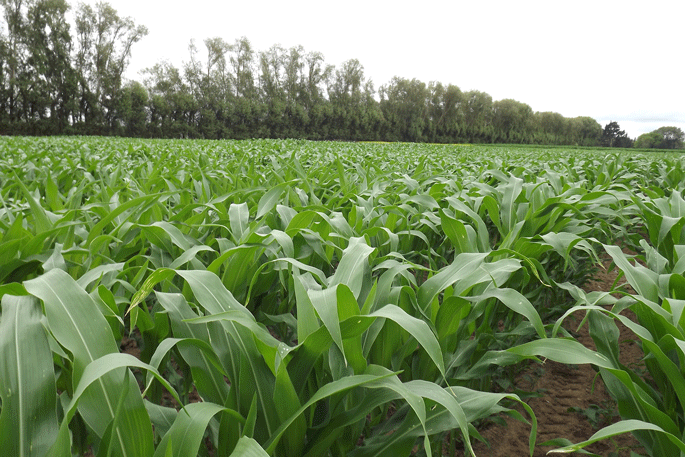New Zealand’s recommended maize planting rates have flatlined, while in the United States these continue to increase on an annual basis.
So, why isn’t New Zealand following the US trend?
For the last 15 years, recommended planting rates for medium to long maturity maize silage hybrids in New Zealand have remained static at between 105,000 and 110,000 a hectare. Maize grain planting rates have lifted marginally to just above 95,000/ha.
In comparison, US Department of Agriculture data shows that maize planting rates have increased on average by 900 seeds/ha a year since the 1960s, doubling from 40,000 to 80,000/ha. Over the same timeframe, maize grain yield has continued to increase on average at a rate of about 125 kg/ha/year. Many in the US believe that this increasing trend in plant population will continue well into the future.
The US yield increase is attributed to genetic gain, agronomic improvements and increasing plant population. Maize grain is a massive crop in the US, with 32 to 36 million ha planted each year.
Foundation for Arable Research senior maize researcher David Densley told growers at a series of winter maize workshops that maize silage and grain seeding rates have more or less remained static since the inception of maize production in New Zealand in the early 1990s.
“Some research and commercial observations suggest that under current management practices and climatic conditions seeding rates may be about right.”
David asked those attending the workshops as to why they believed recommended seeding rates have more or less remained flat despite increases overseas.
Some suggested that in the US they were starting from much lower densities and are only catching up to New Zealand seeding rates while some thought farmers are possibly deterred by the cost of the additional seed required. Higher planting rates mean a higher yield is required just to breakeven on costs.
Factors in New Zealand that support higher populations include a maritime climate, which results in lower overnight temperatures than those experienced in the US. New Zealand’s soils are also very different, containing much higher organic matter and spatial distribution of nutrients.
As 80 per cent of New Zealand’s maize production is for silage, which is harvested earlier than grain, this creates a very different production system that generally includes winter crop production.
US maize expert Professor Fred Below, of the Crop Physiology Laboratory, University of Illinois, who visited New Zealand earlier this year as a guest of FAR, ranks plant population as fourth in importance in his “Seven Wonders” for maize yield. The main factors are weather, ranked first, fertility, second and hybrid, third.
US research carried out by Prof Below showed that as plant population increases, the maize root mass decreases by 1 per cent for every 1000 additional maize plants. As roots expand only 15cm to 20cm horizontally and do not cross the row this could impact on the ability (or inability) of the maize roots to extract nutrients and water from the centre of a standard 76cm maize row.
If roots are smaller with higher populations, then fertiliser placement becomes an important consideration, with US research showing an improved response when fertiliser is banded along the root zone rather than being broadcast.
“This raises the question of whether banding fertiliser can improve New Zealand maize production, and may be one reason as to why we are not observing higher yields when increasing seeding rate.”



0 Comments
Leave a Comment